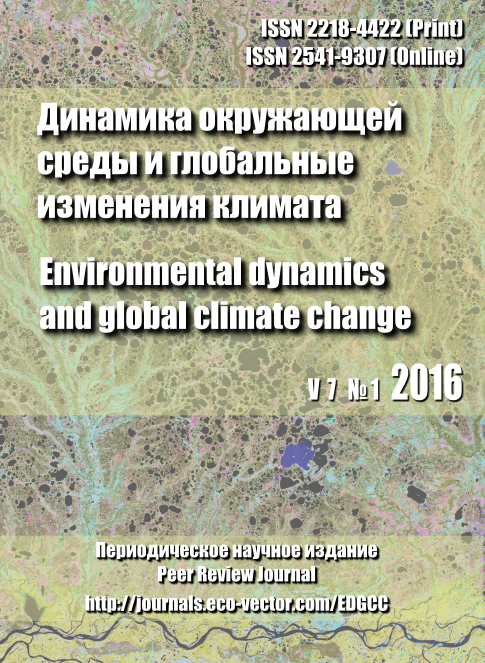Phytoliths of species some genera of the family Cyperaceae
- Authors: Bobrov AA1, Semenov AN1, Alexeev Y.E1
-
Affiliations:
- Lomonosov Moscow State University
- Issue: Vol 7, No 1 (2016)
- Pages: 27-33
- Section: Articles
- URL: https://edgccjournal.org/EDGCC/article/view/6334
- DOI: https://doi.org/10.17816/edgcc7127-33
- ID: 6334
Cite item
Full Text
Abstract
A comparative quantitative analysis of phytoliths complexes 31 species of the family Cyperaceae. The analysis results are statistically processed by methods of cluster analysis and canonical correspondent. Highlighted a statistically significant group of species of sedge form similarity indicator phytoliths. The analysis of phytoliths assemblages vicar sedge species to ascertain the impact of environmental conditions on the process of accumulation of biogenic silica in these plants. In order Systematic sedges and other plants can be used mainly phytoliths specific indicator or form and to a lesser extent their assemblages or phytoliths spectra. Vicar critical types of sedges can be differentiated by their phytoliths spectra as vicar closely related species are often differences in the composition of phytoliths. The results obtained can be used for phylogenetic studies of the family as the sedge and in paleobotany.
Keywords
About the authors
A A Bobrov
Lomonosov Moscow State University
Author for correspondence.
Email: anatoly-bobrov@yandex.ru
A N Semenov
Lomonosov Moscow State University
Email: anatoly-bobrov@yandex.ru
Yu E Alexeev
Lomonosov Moscow State University
Email: anatoly-bobrov@yandex.ru
References
- Алексеев Ю.Е. 1996. Осоки. Москва: Аргус. 251 с.
- Бобров А.А. 2002. Фитолитный анализ современных и погребенных почв курганных могильников Калмыкии // Могильник Островной. Итоги комплексного исследования памятников археологии Северо-Западного Прикаспия. С. 137-166.
- Бобров А.А. 2002. Фитолиты растений Ики-Бурульского района Калмыкии: первые результаты // Могильник Островной. Итоги комплексного исследования памятников археологии Северо-Западного Прикаспия. С. 167-175.
- Олонова М.В., Мезина Н.C. 2011. Фитолиты некоторых мезофильных видов мятликов (Poa L.) секции Stenopoa и возможность их использования в систематике // Вестник Томского государственного университета. Биология. № 1 (13). С. 51-60.
- Blackman E. 1969. The pattern and sequence of opaline silica deposition in rye (Secale cereale L.) // Ann. Bot. V. 32. № 125. P. 207-218.
- Bobrov A.A., Bobrova E.K., Alexeev Ju.E. 2001a. Biogenic silica in biosystematics - potential uses // Phytoliths: Applications in Earth Sciences and Human History. A.A. Balkena Publishers. P. 279-288.
- Bobrov A.A., Bobrova E.K. 2001b. Phytoliths assemblages in podzol and podzolic soils of the South-West coast of the Okhotsk sea // Phytoliths: Applications in Earth Sciences and Human History. A.A. Balkena Publishers. P. 365-370.
- Bobrov A.A. 2007. Phytolits and micropaleontological data in boggy soil // Plant People and Places - Recent Studies in Phytolith Analysis. OXBOW BOOKS. Oxford. P. 163-172.
- Bronnikova M.A., Zazovskaya E.P., Bobrov A.A. 2003. Local landscape evolution related to human impact of an early medieval pre-urban center in the Upper Dnieper region (Central Russian Plain): an interdisciplinary experience // Revista Mexicana de Ciencias Geologicas. V. 20. №. 3. P. 245-262.
- Brown D.A. 1984. Prospects and limits of a phytoliths key for grasses in the Central United States // J. Archeol. Sci. Vol. 11. № 4. P.345-368.
- Geis J.W. 1978. Biogenic opal in three species of gramineae // Ann. Bot. V. 42. P. 1119-1129.
- Honaine M.F., Zucol A.F., 2009. Osterrieth M.L. Phytolith analysis of Cyperaceae from the Pampean region, Argentina. Australian Journal of Botany. V. 57 (6). P. 512-523.
- Honaine M.F., Borrelli N.L., Osterrieth M.L and Del Rio L. 2013. Amorphous silica biomineralizations in Schoenoplectus californicus (Cyperaceae): their relation with maturation stage and silica availability // Boletín de la Sociedad Argentina de Botánica. V. 48. №. 2.
- Mehra P.N., Sharma O.P. 1965. Epidermal silica cells in the Cyperaceae // Bot. Gaz. V. 126. № 1. P. 53-58.
- Metcalf C.R. 1960. Anatomy of the Monocotyledons. V. 1. Graminae. London: Oxford Clarendon Press. 562 p.
- Metcalf C.R. 1971. Anatomy of the Monocotyledons.V. 2. Cyperacea. London: Oxford Clarendon University Press. 564 p.
- Soni S.L., Kaufman P.B., Bigelow W.G. 1972. Studies on silicon accumulation in developing intermodal epidermal cells of Cyperus alternifoilius // Micron. V. 3. P. 348-356.
- Toivonen H., Toivonen T. 1978. Perigynium and achene epidermis in some species of Carex subopu. Vignea ( Cyperaceae ) studies by SEM // Ann. Bot. Fennici. V. 13. P. 49-59.
- Ollendorf A.L., Mulholland S.C., Ropp G. 1987. Phytoliths from some Israeli sedgei // Israel J. Bot. V. 36. № 3. P.125-132.
- Piperno D.R. 1988. Phytolith analysis. An archaelogical and geological perspective. San-Diego: Acad. Press. 260 p.
Supplementary files










